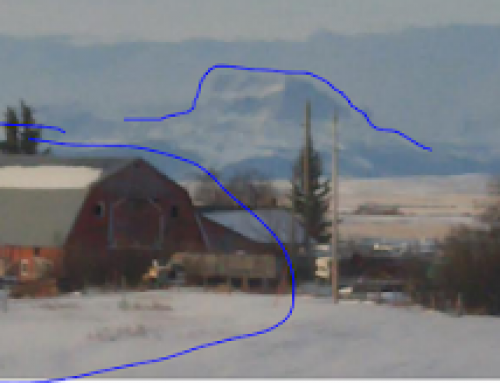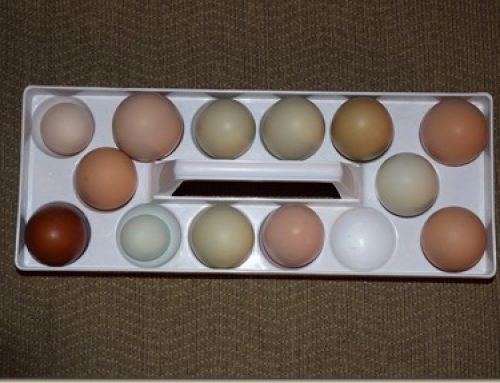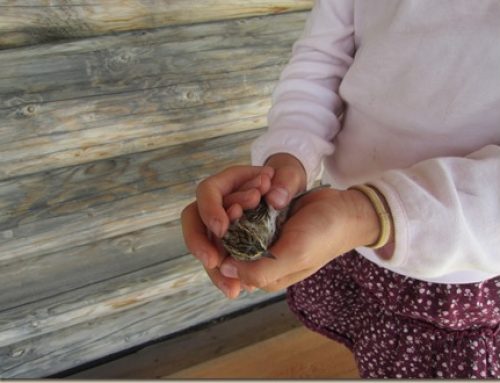I’m not really a farmer but a good friend of mine told me the other day that he doesn’t know anyone that has cows and chickens that isn’t a farmer. I couldn’t really argue. Over the past few months I’ve been contemplating how risky farming really is. Not like stock market volatility risk where markets go up and down on just the breathe of possible bad news. I mean actual risk where at any moment your animals can be dead and all your crops can be gone. Just a few weeks ago we bought sixteen chicks that were four weeks old. We were super excited as the breed was right and we got them for $2 a piece. We built a chicken tractor that was secured by chicken wire. The very next morning we came out and all the chicks were gone except for the four remaining stiff bodies. Our chicken tractor was a good learning experience. It wasn’t really the money we lost but the time lost really is the pain. We are now hatching our own chicks in an incubator. So in maybe two months we’ll be back where we were the night before the chicks got eaten up. We are learning to be much more careful with all that is under our watch and care as it is much easier to do that than to try to pick up the pieces of a careless happenstance. What are some of the risks involved in Farming? Let me name a few:
- Animal death-chickens dying or being eaten
- tarps blowing off hay pile
- hay spoiling due to tarp blowing off
- Eggs breaking or chickens eating eggs
- Milk spilling – cow kicking bucket
- Shed blowing away – wind is a terrible problem here
- Crops not growing- weather, pests
- Can’t harvest crops- rain spoils hay on ground after being cut down
- Pests eating crops- deer eating hay and garden. Marmots eating garden
- Prices of crop fluctuate-One year we can get top dollar for hay, the next year we can’t give it away
- Breaking down of equipment-All of the profit on crops can be lost with one piece of equipment being damaged. If equipment is broken crops can’t be brought in.
I know some farmers that do quite well with farming one type of crop. However, it scares me to death with the thought of putting all my eggs in one basket. I don’t really think a small family farm can succeed long term by only having one type of income producing potential. ************If you are not a geeky numbers person or care about financial theory you may want to skip this next discussion*********************** In business management the risk can actually be quantified. In summary all business options have risk. Some transactions have more risk than others. Because of the risk involved there must be a higher potential return to offset the inherent risk. If a transaction has lower risk the return may have less upside potential but because it is a more sure thing people will choose that type of transaction because they can actually sleep at night because they don’t have to worry if they will have to sell the farm in the morning because they lost all of their money. When deciding on which option is best for a company there is actually some fancy financial formulas to determine what is the best options to choose based on the risk of the transaction. I’m sure I could come up with some fancy excel spreadsheet that analyzes the type of option along with the beta coefficient but I’ll save that for another day. ************************************** So what is the answer to minimizing risk? I guess I’d have to agree with the business theory of diversifying risk. If all the farm income come from one type of crop or animal I’d suggest diversifying activities until the farm has multiple ways to bring in money. A fully functioning small family farm may look like the following: 20% of income from cash crop such as grain, barley, or other planted seed 20% from animal income – Cow, goat, chicken, etc. Either selling animals or the animals byproduct 20% from custom farming- using your equipment to harvest other farmers crops (if you aren’t going to use on your own crops 100%) 20% from farmers markets or CSA boxes 20% from off farm work- I only say this as most small time farmers have an off farm job that helps pay for the expenses on a farm I just made the above scenario up but the idea is to not have all the income coming from one source. Some years may really pay off being in one type of crop or animal but in reality, one bad year could wipe out 10 good years of farming. With risk diversified a farm can withstand a bad crop year if other income sources pick up the slack. I’ve kind of taken the advice from our good Real farming friends, The Greens. This is how they have become successful farmers. Mr. Green even made the plunge to quite his off farm job to farm full time. He still uses the above strategy when he’s deciding what farming activities he will participate in for each coming year. The Greens have the following streams of income:
- Cows
- Chickens
- Turkeys
- CSA boxes
- Farmers Markets
- Pigs
- Off farm antique store
- Soap making
One last thing that needs to be mentioned about risk in farming. The minute a farmer has to go into debt to start, expand, or continue operations the risk automatically sky rockets. In my opinion I would warn any farmer against the temptation to go into any type of debt for whatever reason. It’s a trap. Don’t fall for it. Let me repeat: GET OUT OF DEBT or STAY OUT OF DEBT Milly says I’m being pretty preachy for someone who isn’t even a real farmer, so I guess I’ll stop. For any of you REAL or fake (like me) farmers did I miss anything on risks in farming? What do you do to minimize risk in your farming ventures?
4 Comments
Comments are closed.





I like your posts. You are living a dream of mine so I suppose I can live somewhat vicariously through you? Anyway, I heard some interesting stats recently about small sustainable farms. Per acre, small sustainable farms bring in well over $1000 whereas large-scale industrial farms bring in a little over $20/acre. I suppose finding a niche like organics, and non-GMO products on top of diversifying might help increase profitability if you can find a market. Not only do you hedge your "bets" with diversification but you encourage a sustainable "mini-ecosystem" as opposed to monoculture: a terribly inefficient system with catastrophic environmental implications. With the nightmares occurring in the food industry, more and more are looking to the local family (sustainable) farm – that's you, my friend.
I can believe those numbers for profit on a small farm versus large scale farm. The problem is most small farmer making $1000 per acre are probably doing it on less than 20 acres of land. It's pretty hard to subsist on less than $20,000 a year now a days. One of the larger farmers around here planted 60,000 acres this spring. I agree with the sustainability aspect of our food system. It's not. I'm one that has turned to trying to grow most of the food we eat. We don't do it all yet but maybe in the future. I'll have to make sure I figure out how to make Hagen Das bars or I may never grow all of my own food.
This is a topic of great interest to my husband and me, though we qualify ourselves as homesteaders rather than farmers (because we're more about subsistence farming than profit farming.) You make an excellent point that farming cannot fit the consumer/profit model of business. There are too many variables and uncertainties, as you point out. I think the problem is that we've abandoned the agrarian model for a business model that does not work in agriculture.
My husband's job puts him in contact with a lot of farmers who have to work off the farm to make ends meet. Insurance and debt seem to be their biggest obstacles to true success. If they have contracts with commercial companies, they have to have insurance and the insurance company (who are clueless about farming) dictates what to grow and how to grow it. Of course insurance folks want to minimize risk, but don't understand that their models don't apply to farming.
Then there's debt. We priced farms before we bought our 5 little acres, but good grief, whose got millions for a farm? And who can afford the equipment? More debt. The farmer ends up going to work just so he can afford to farm.
Still, that $20,000 a year you mention may be more than enough if one has no debt, the farm is paid for, one grows all one's own food, and is willing to live without the latest toys and gizmos.
Doug, good advice on the debt thing. Also, the different streams of income need to be able to be expanded or contracted as needed, since the profitability changes on each stream, depending on different factors; i.e. fuel prices, fuel prices, THE ECONOMY, etc. Good Luck, The Greens